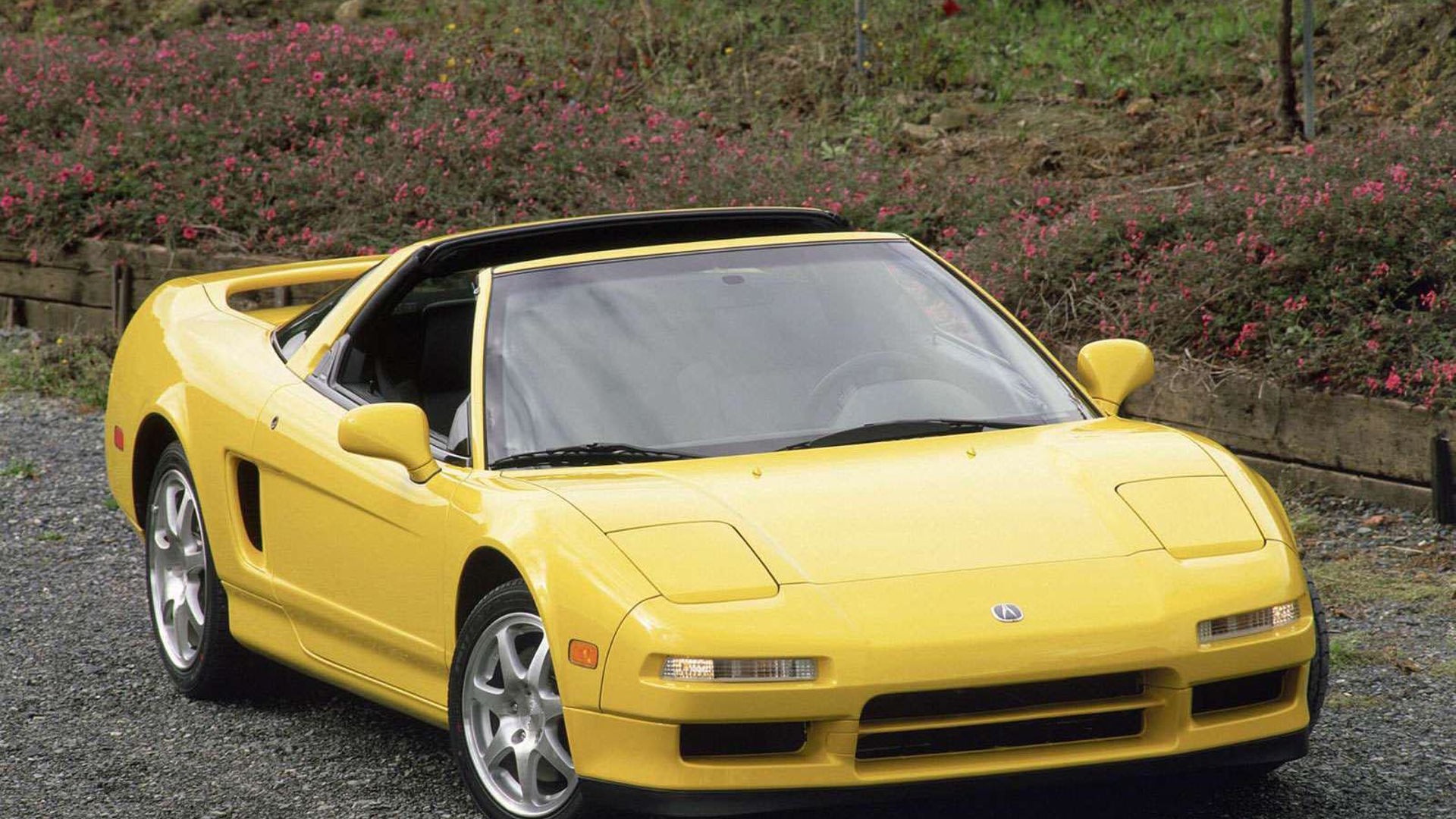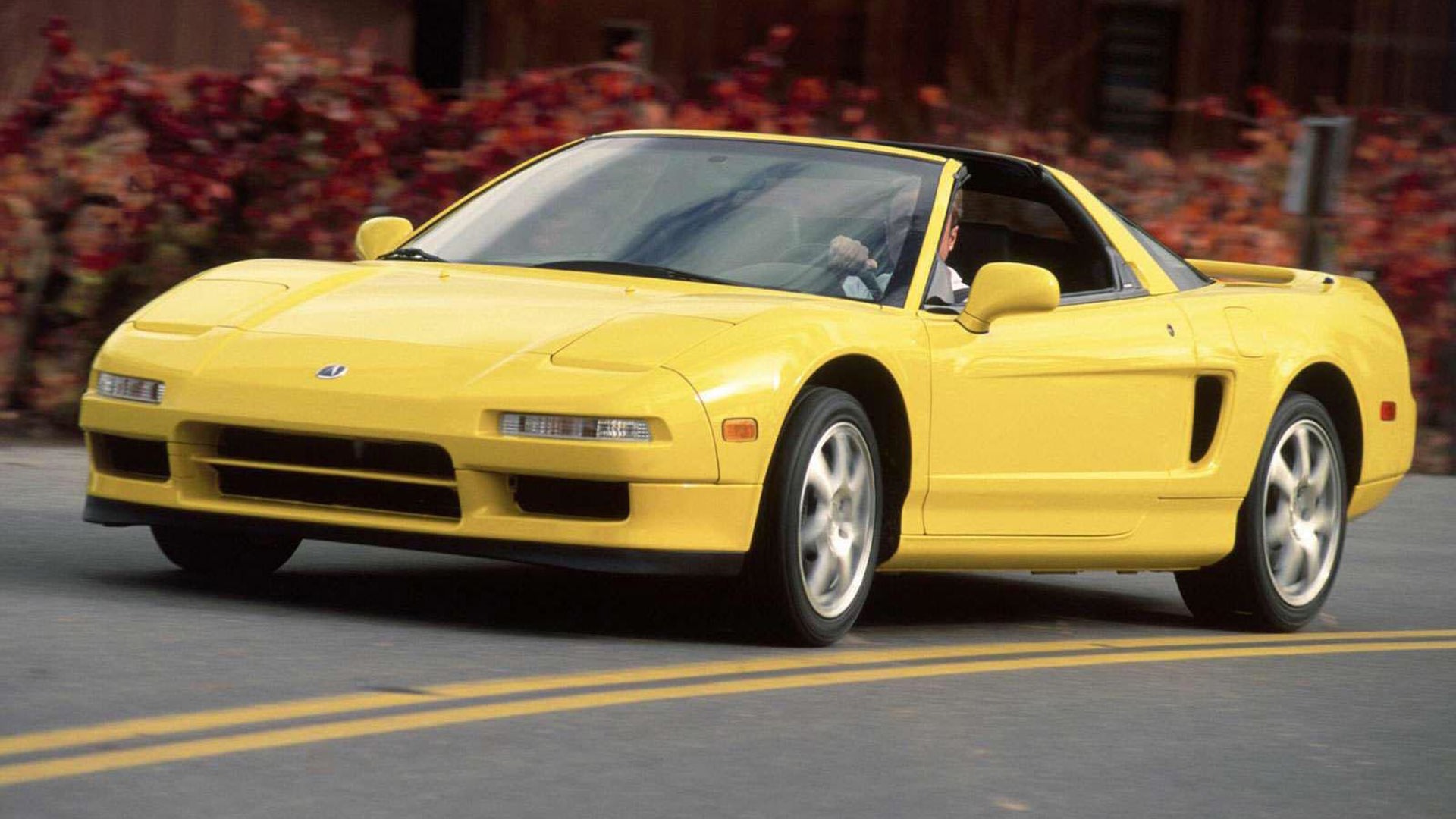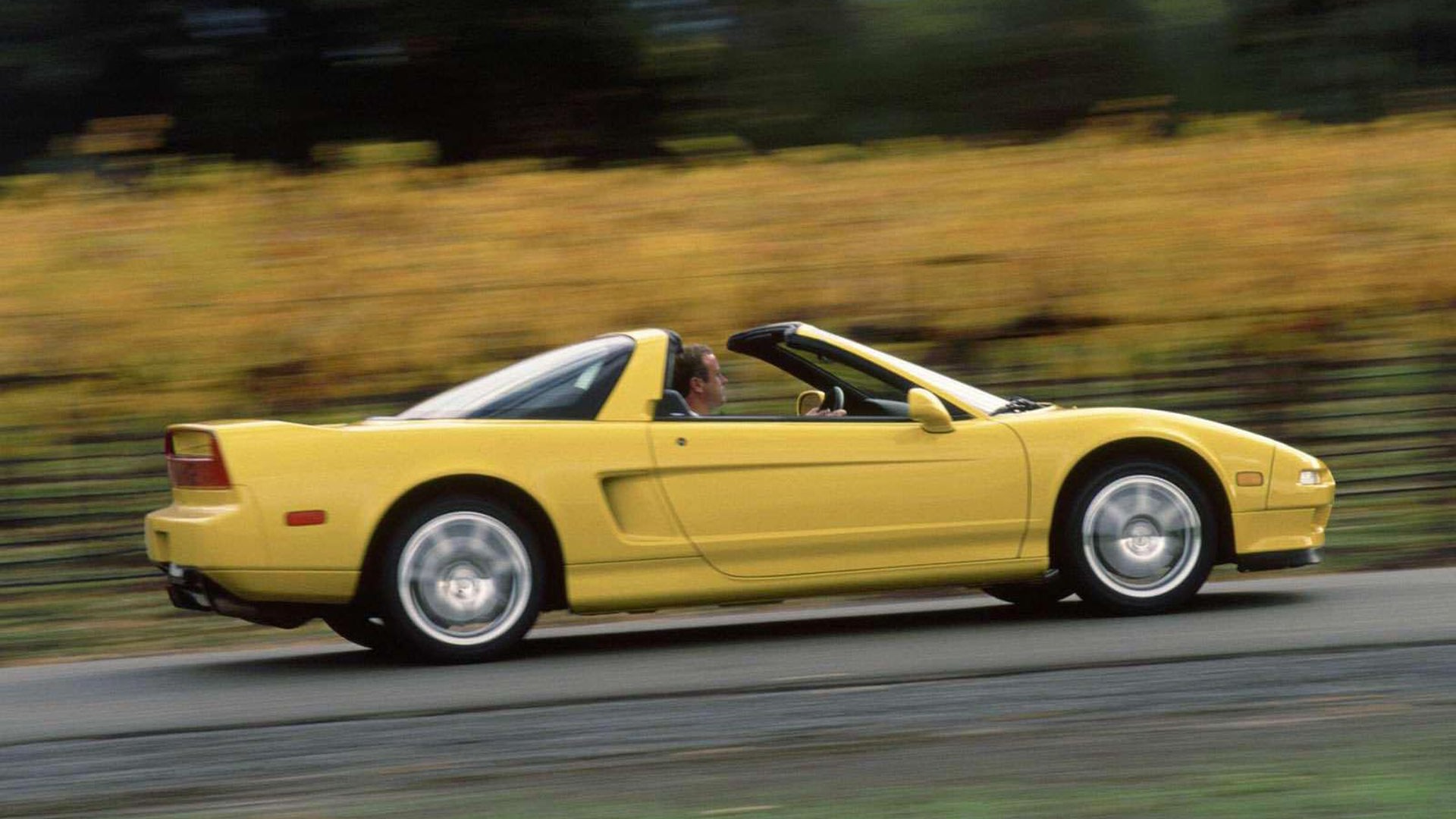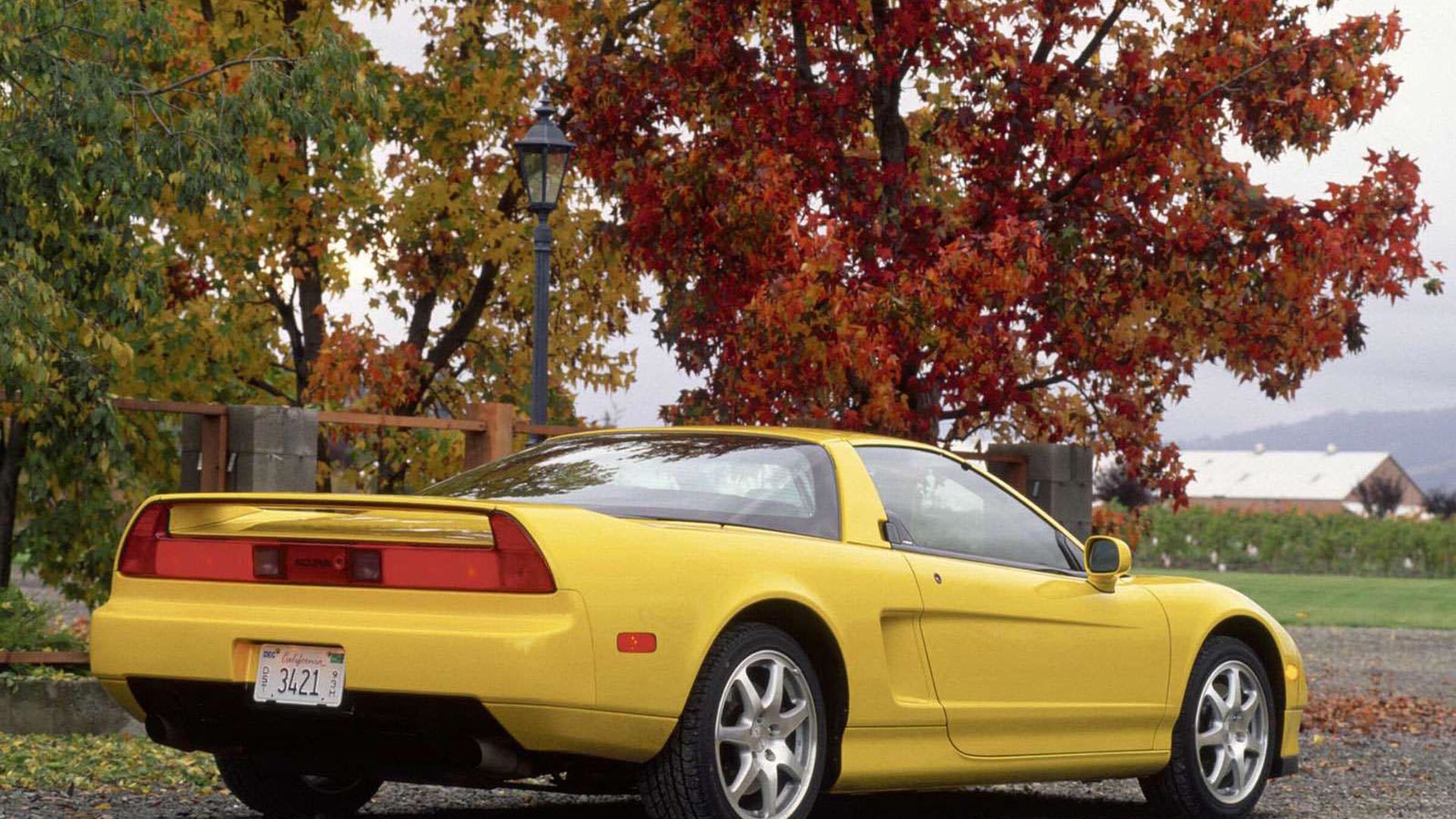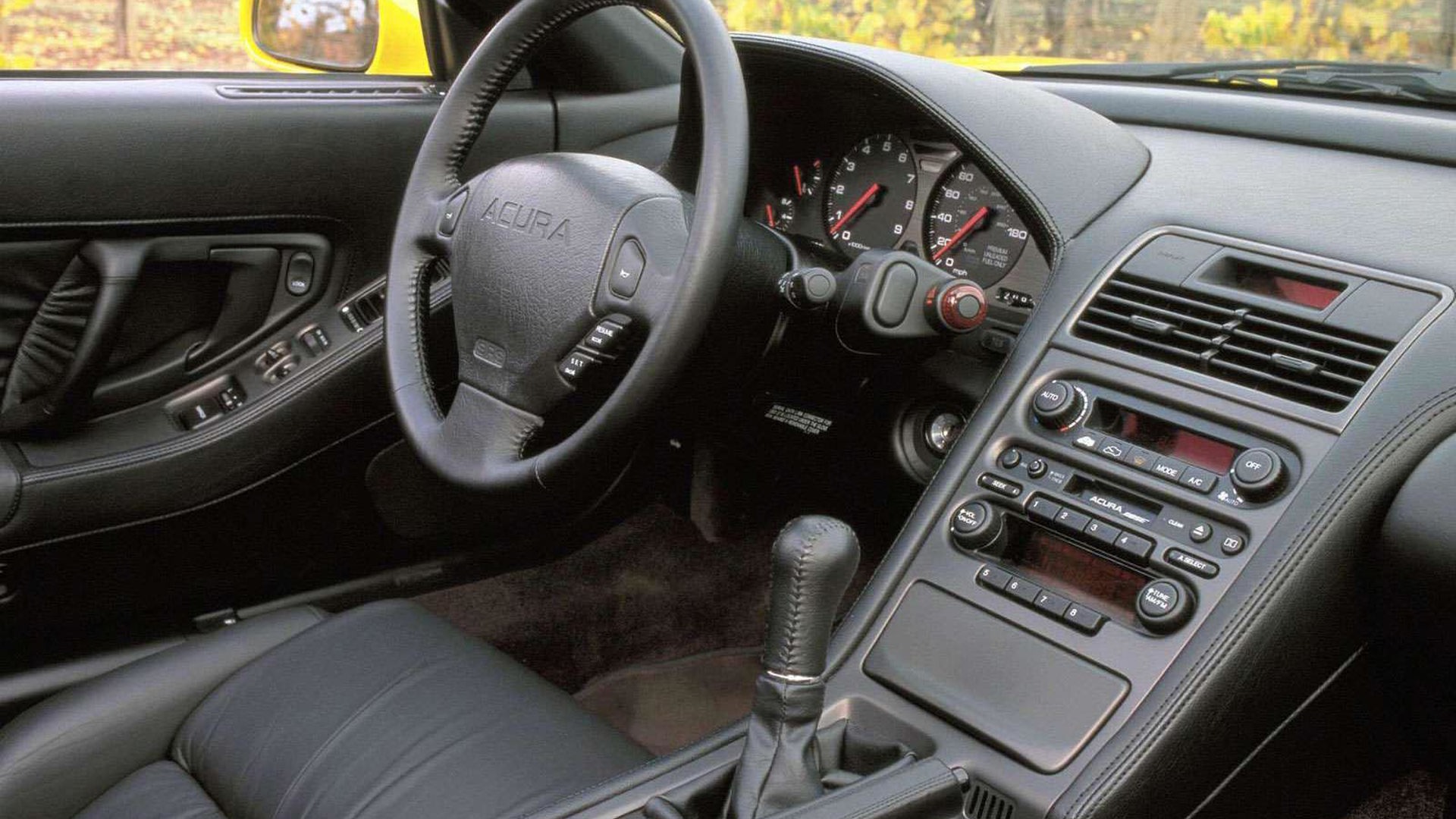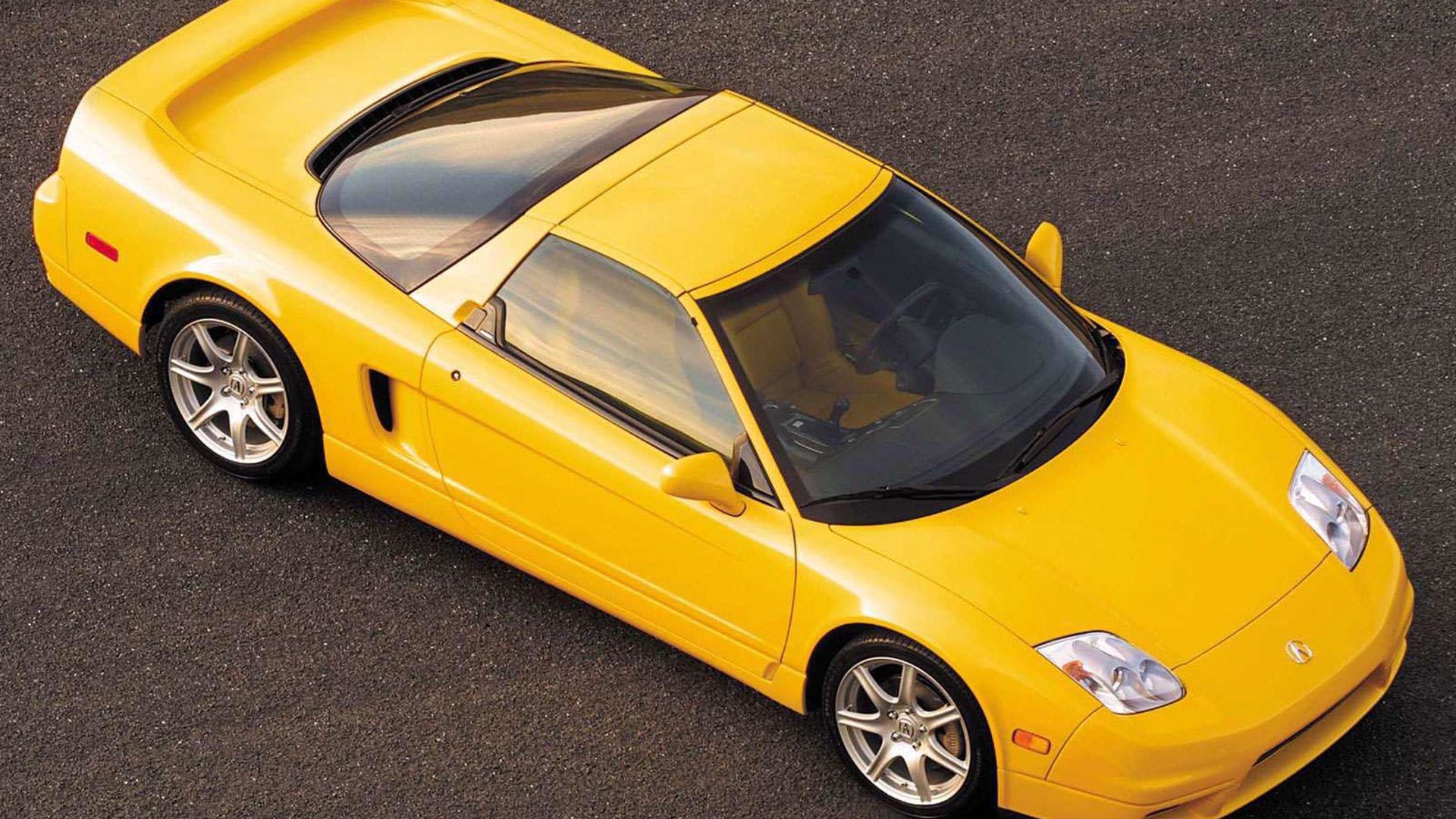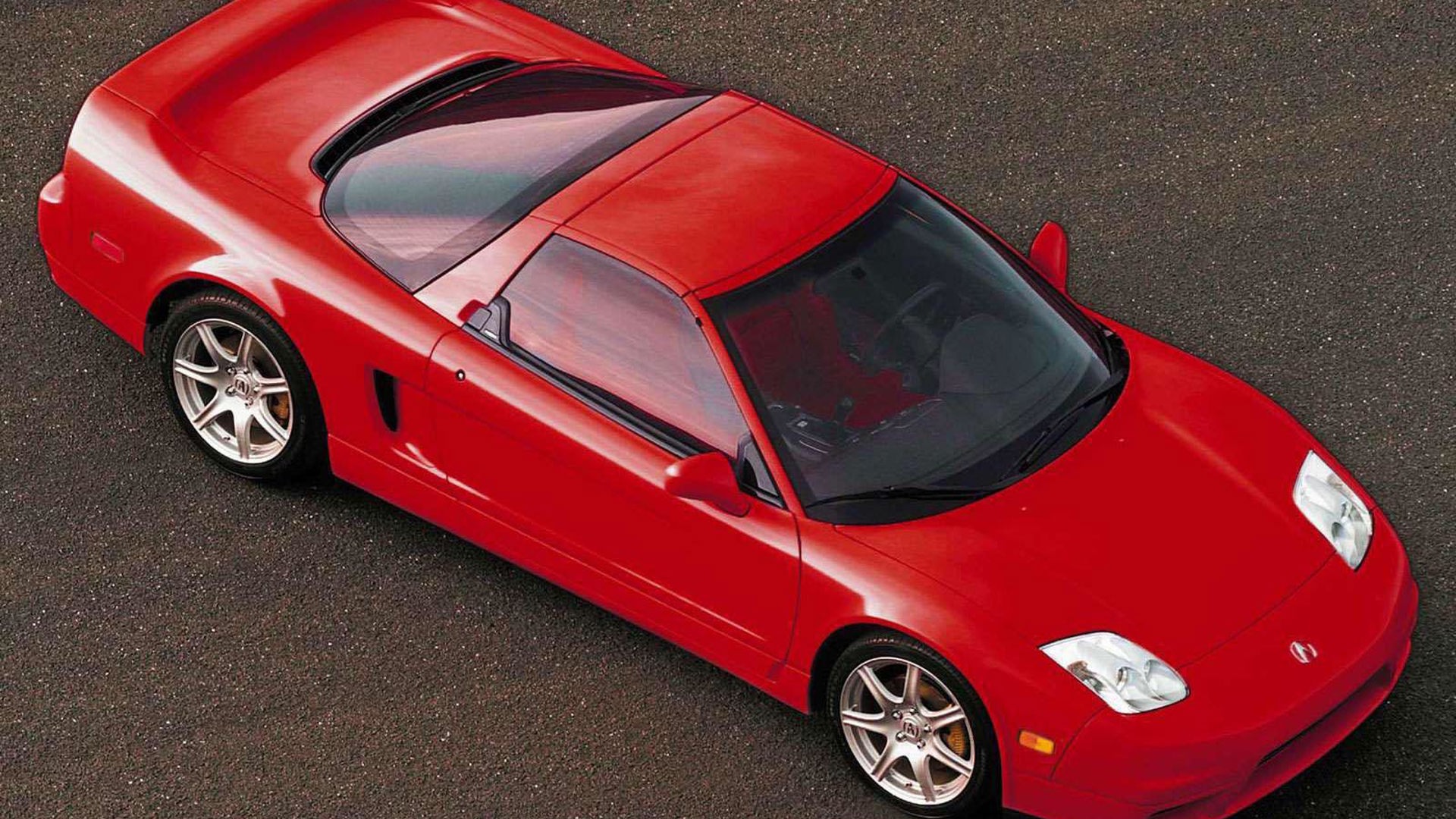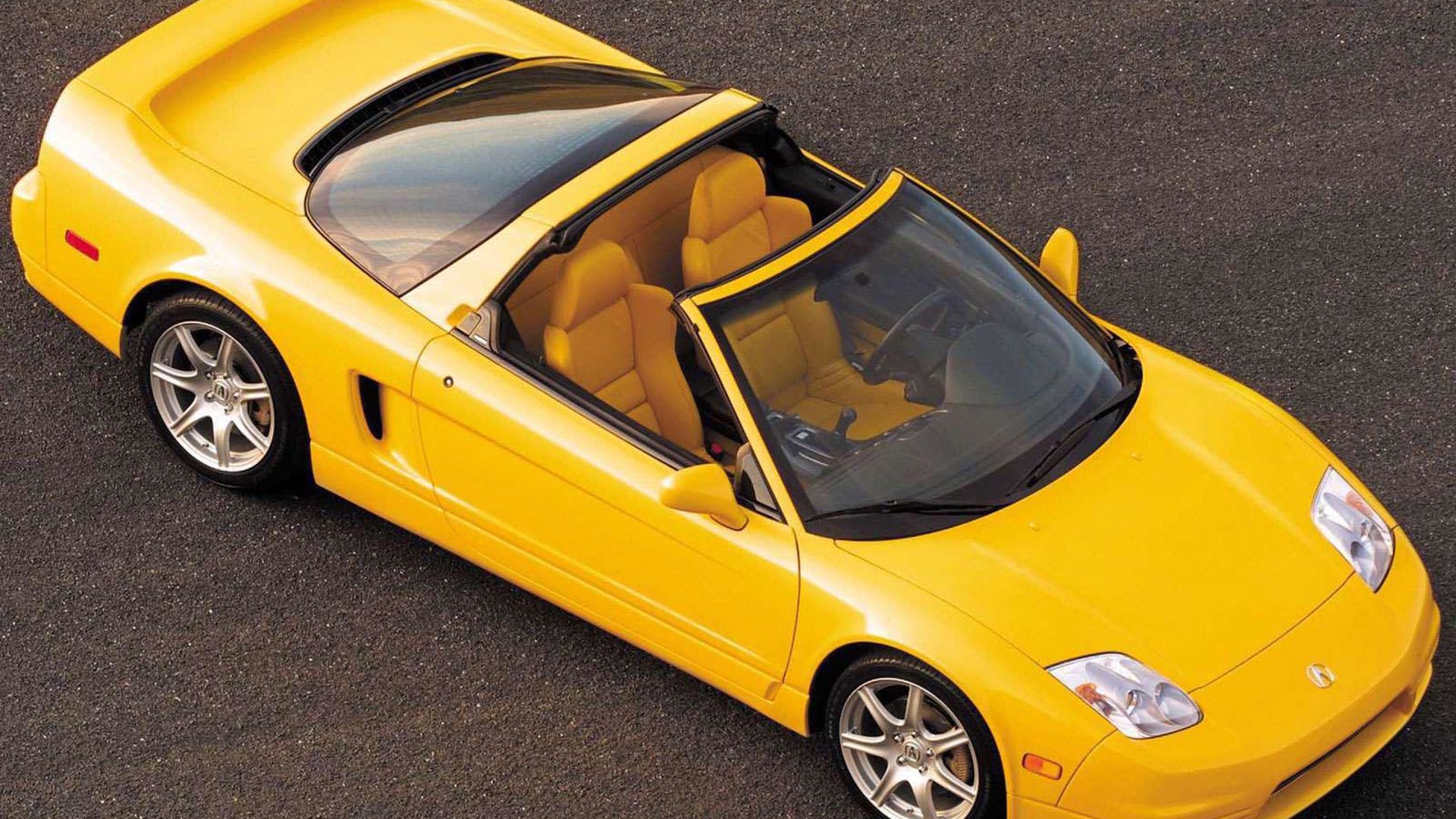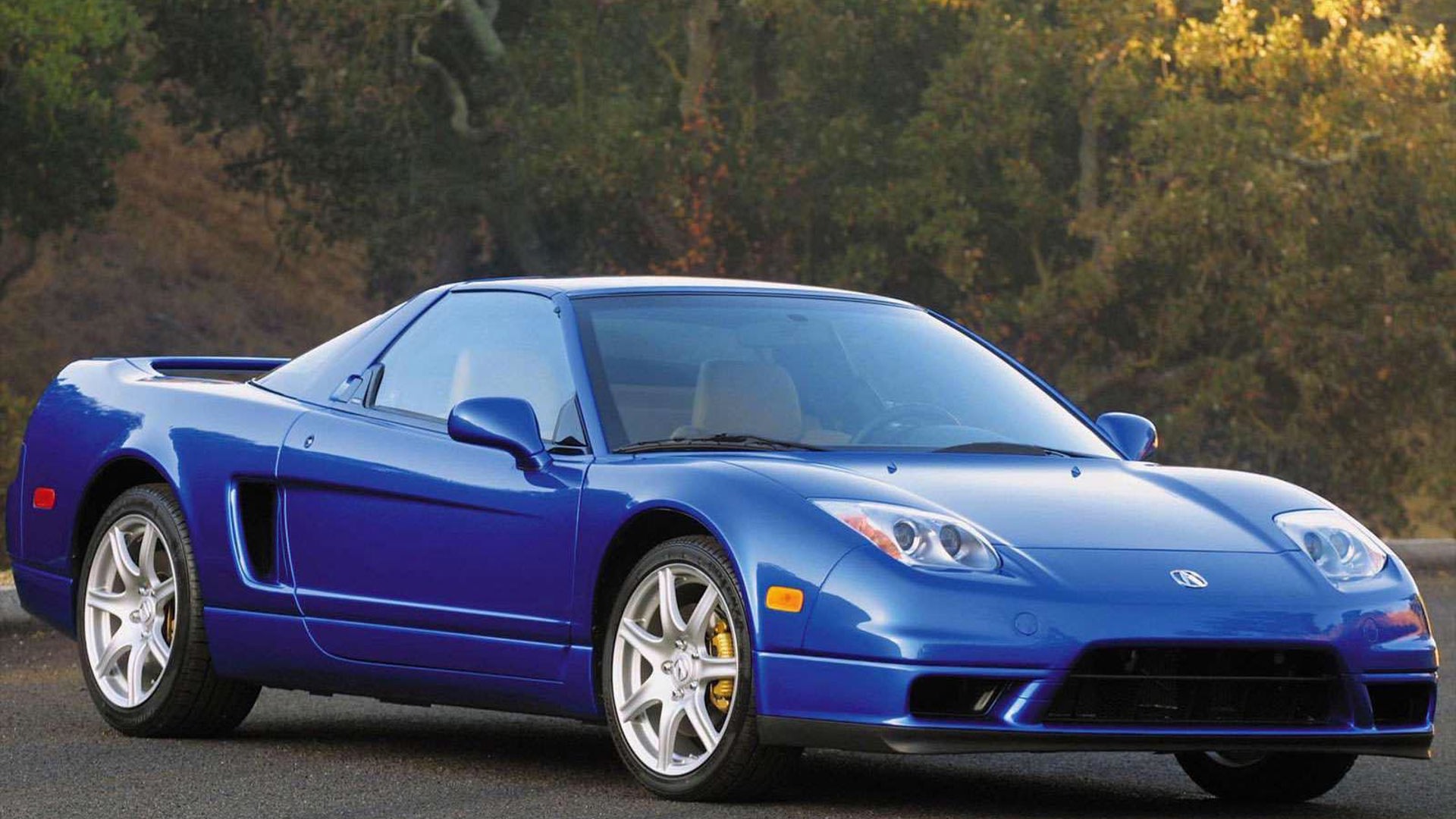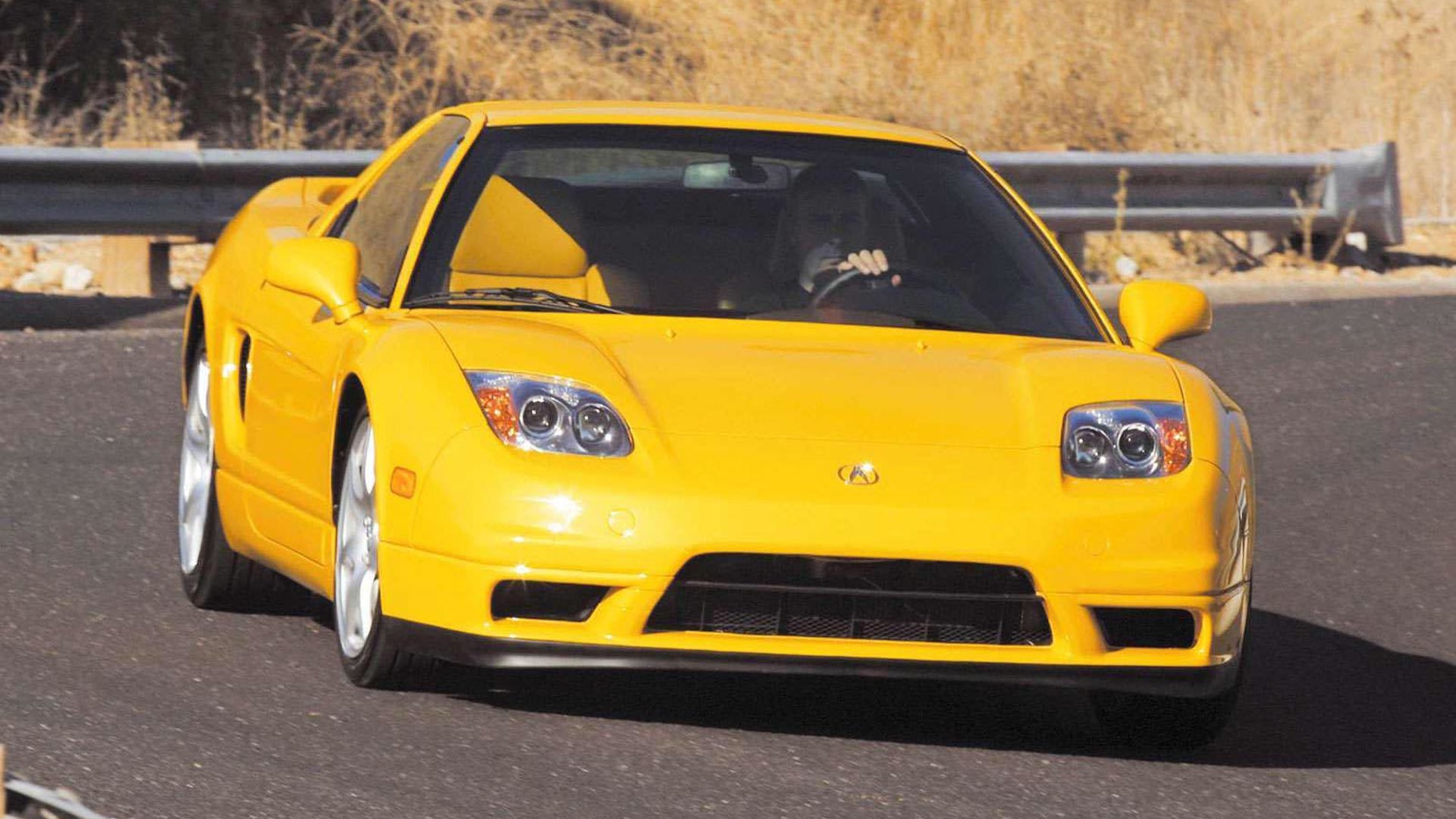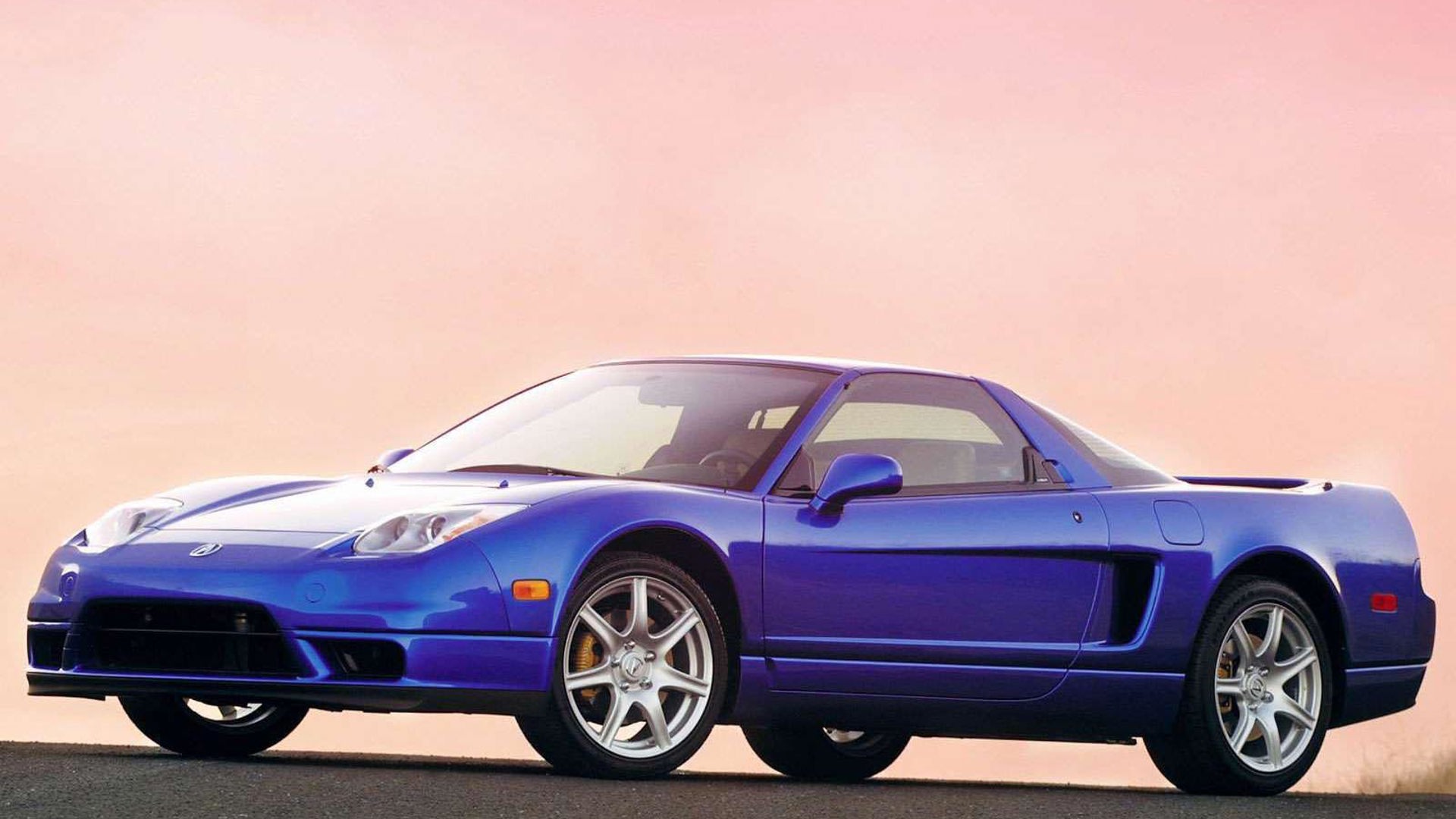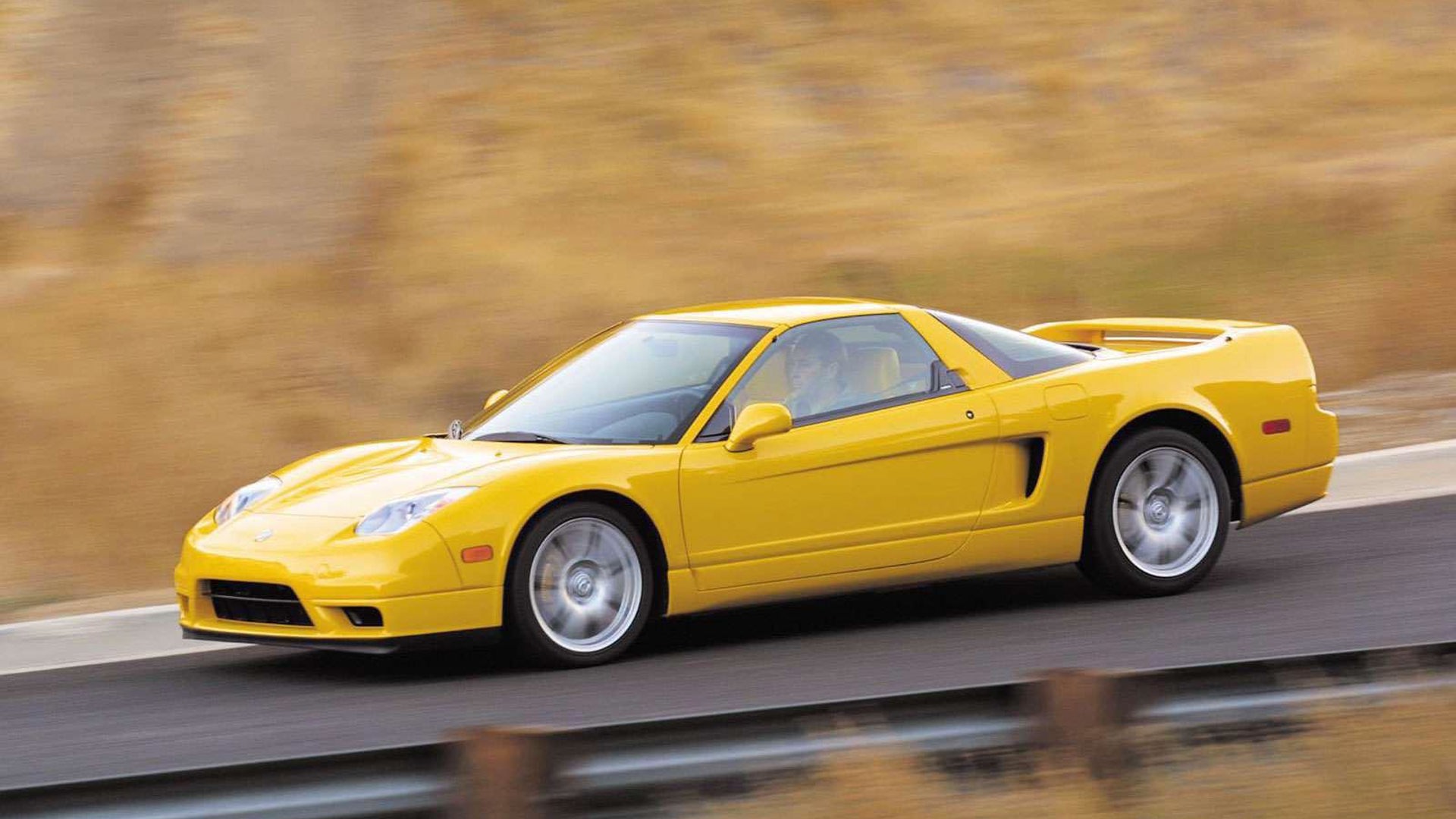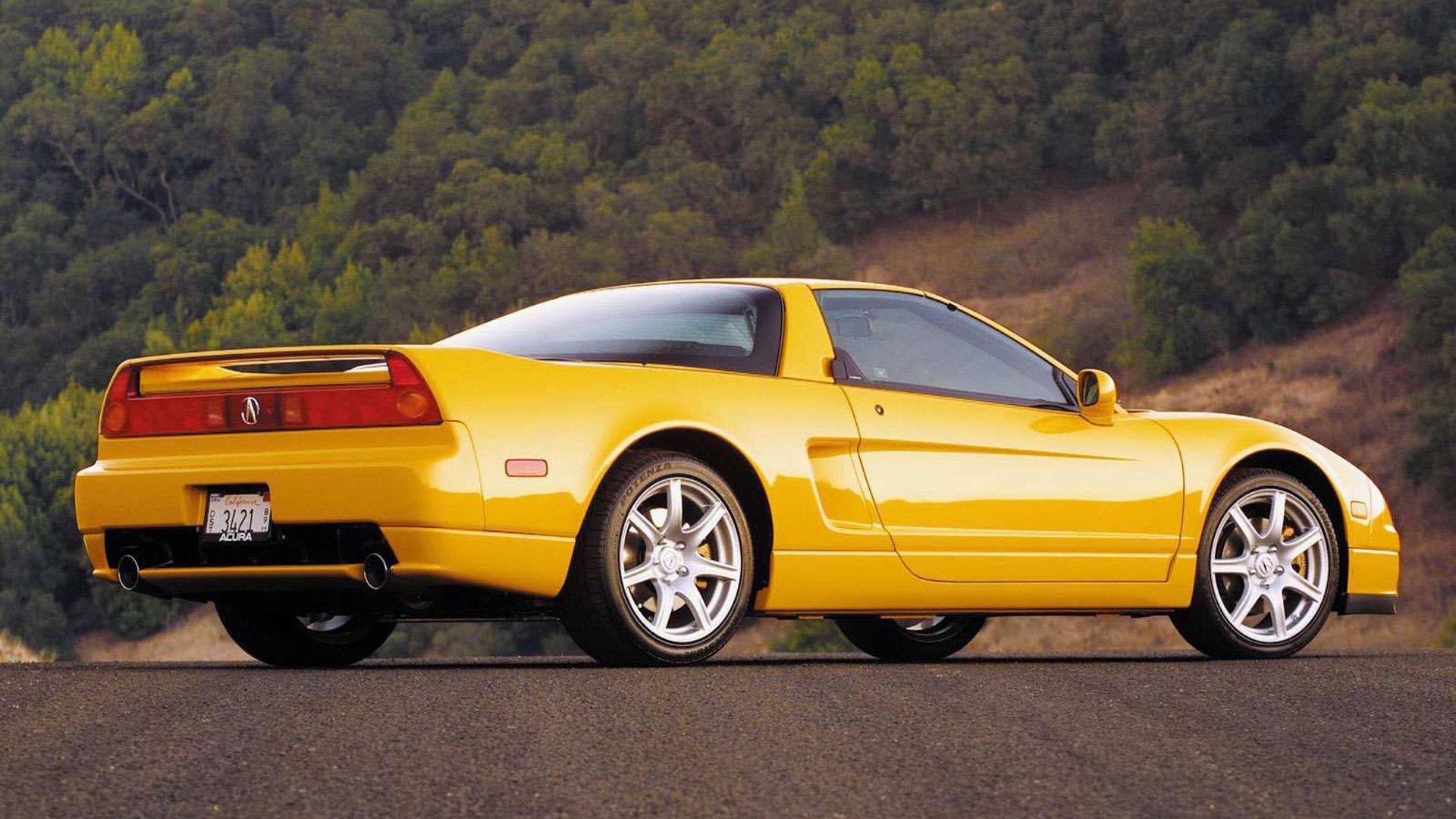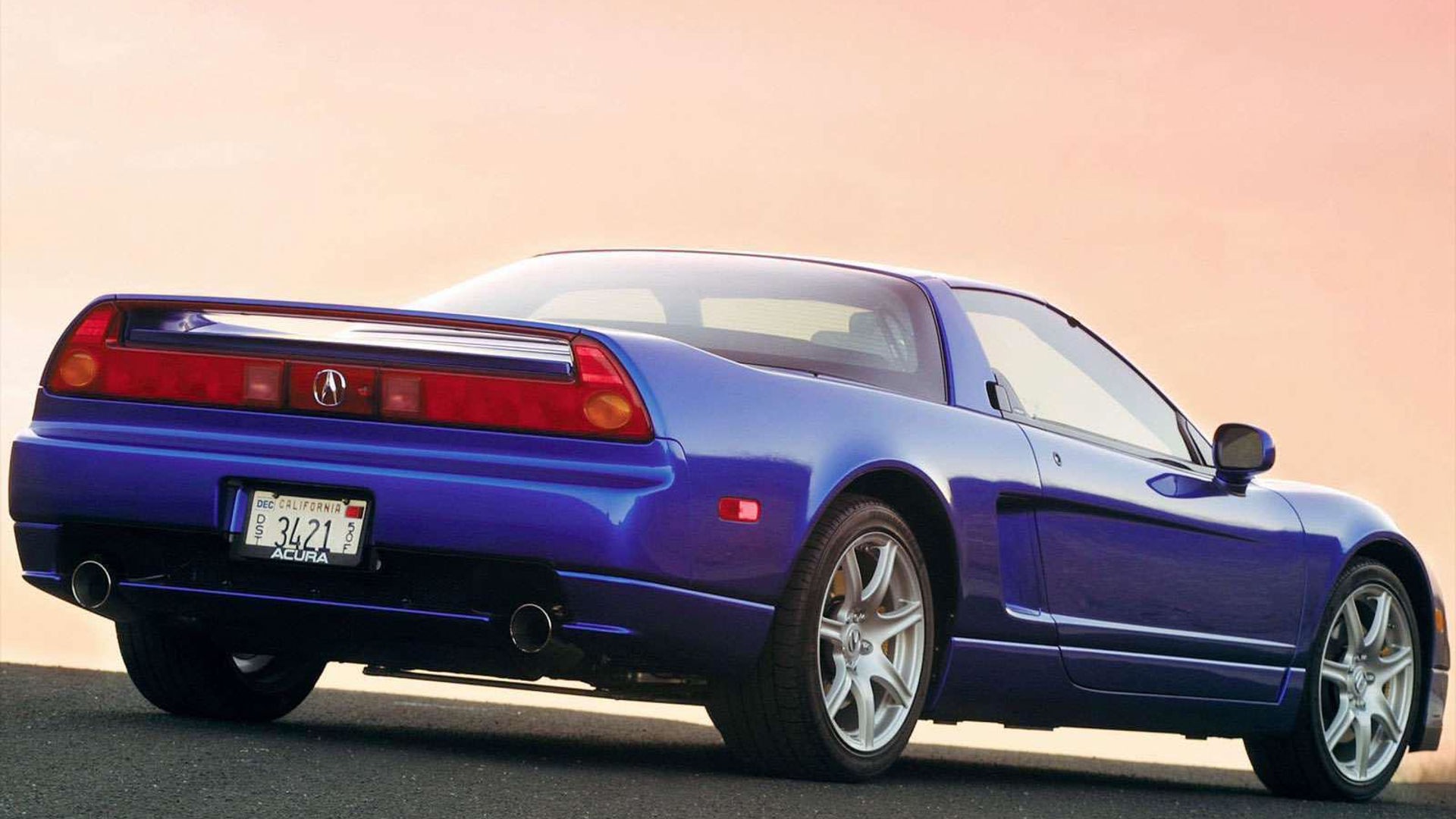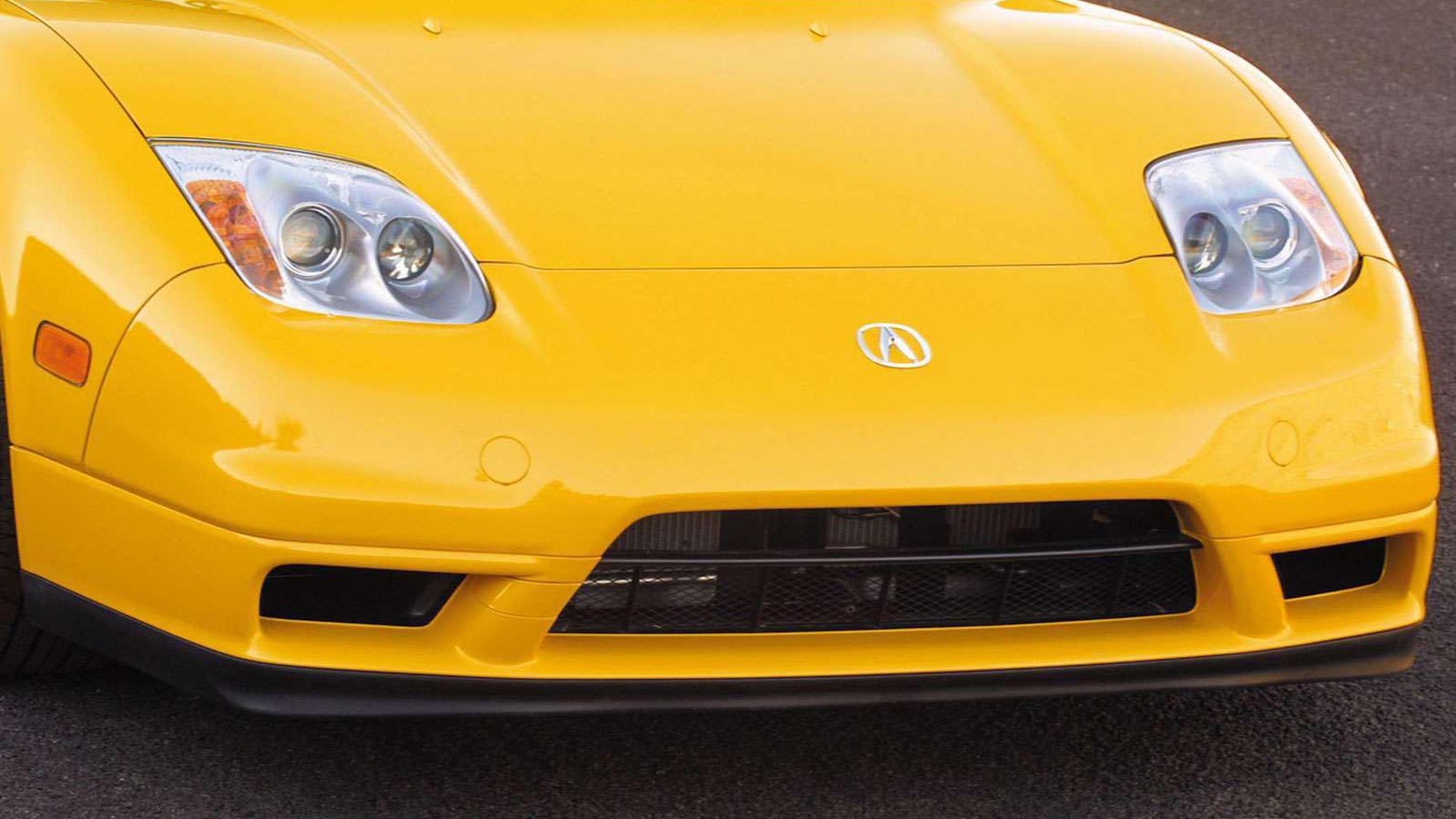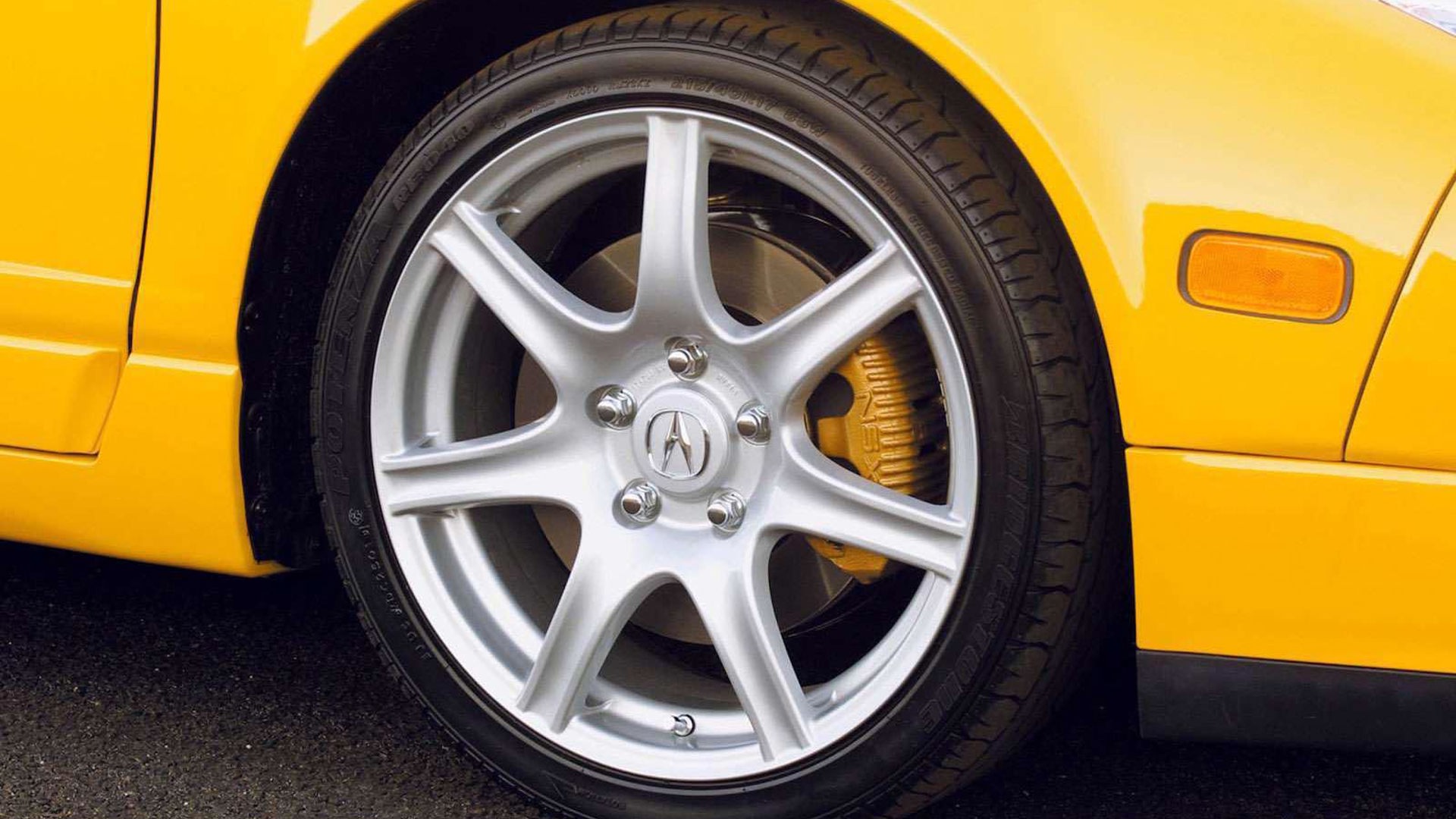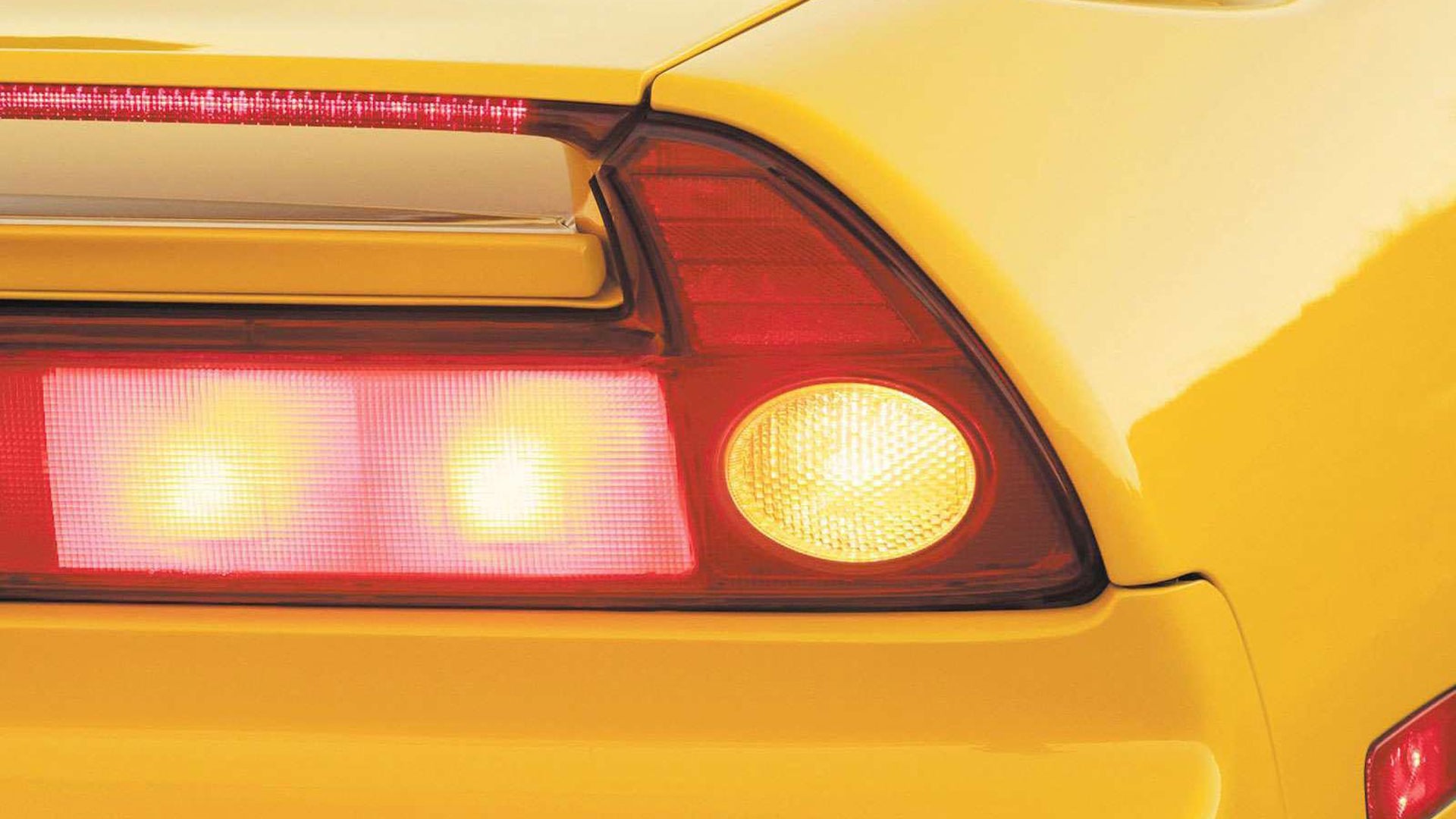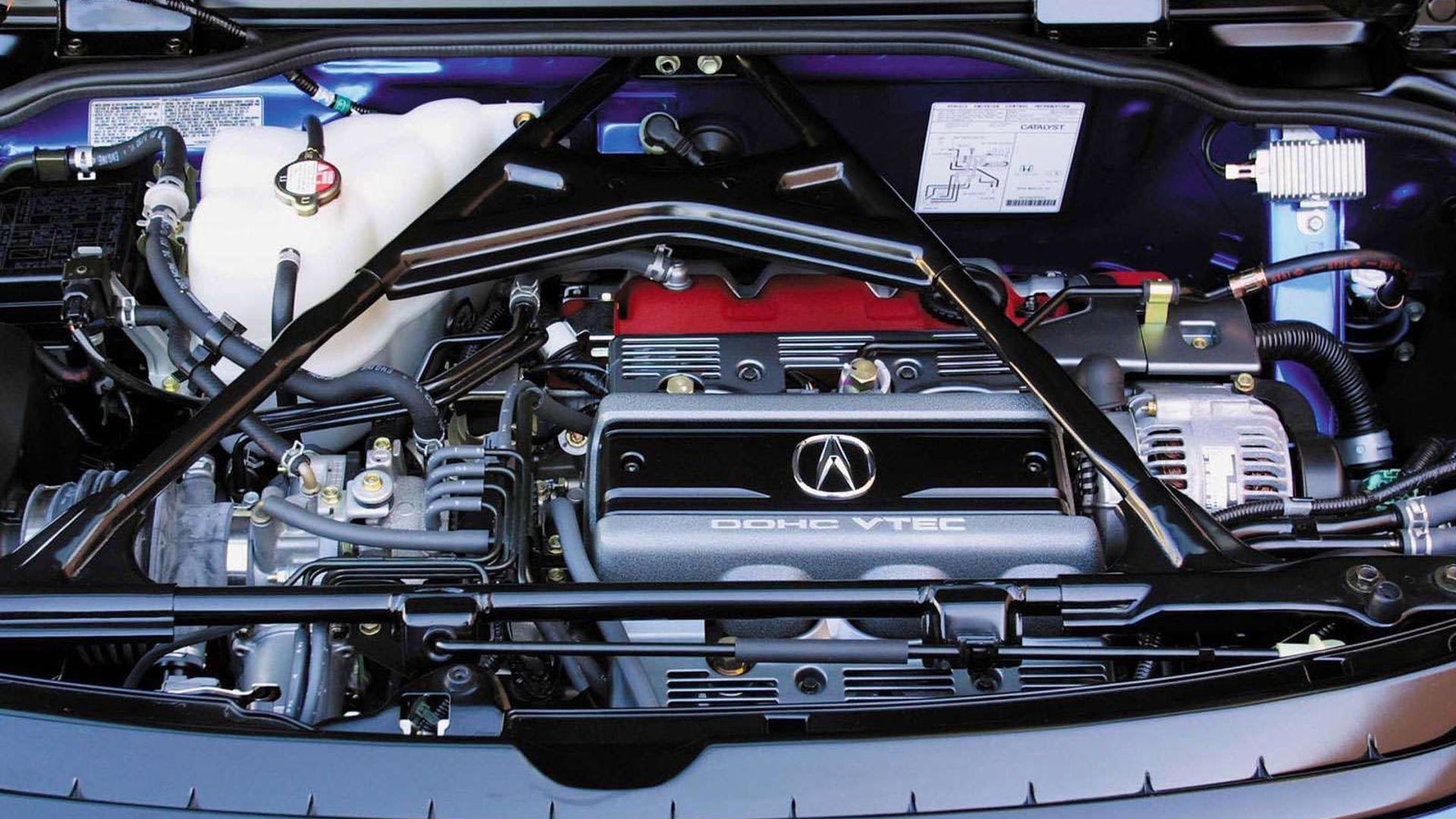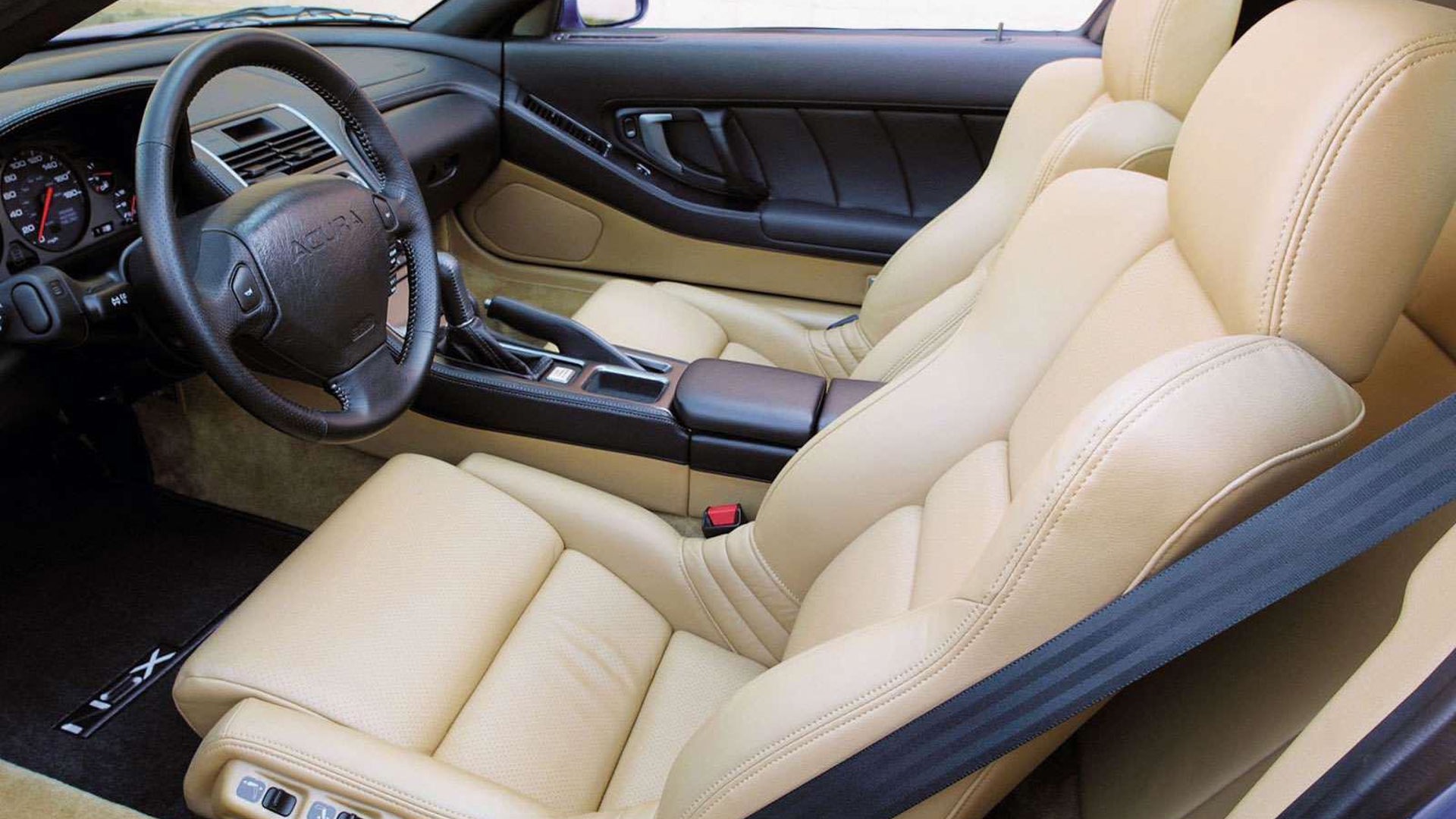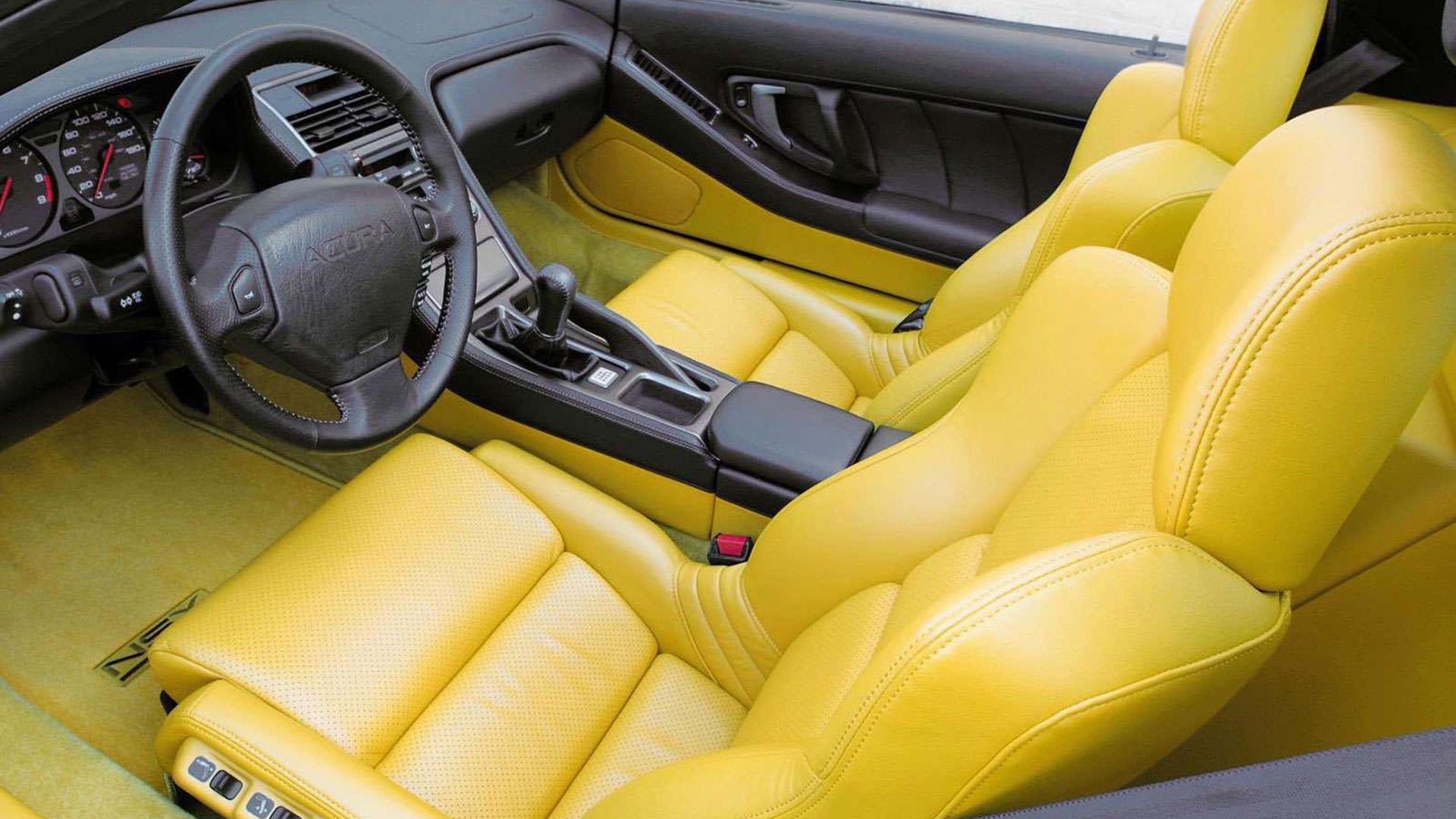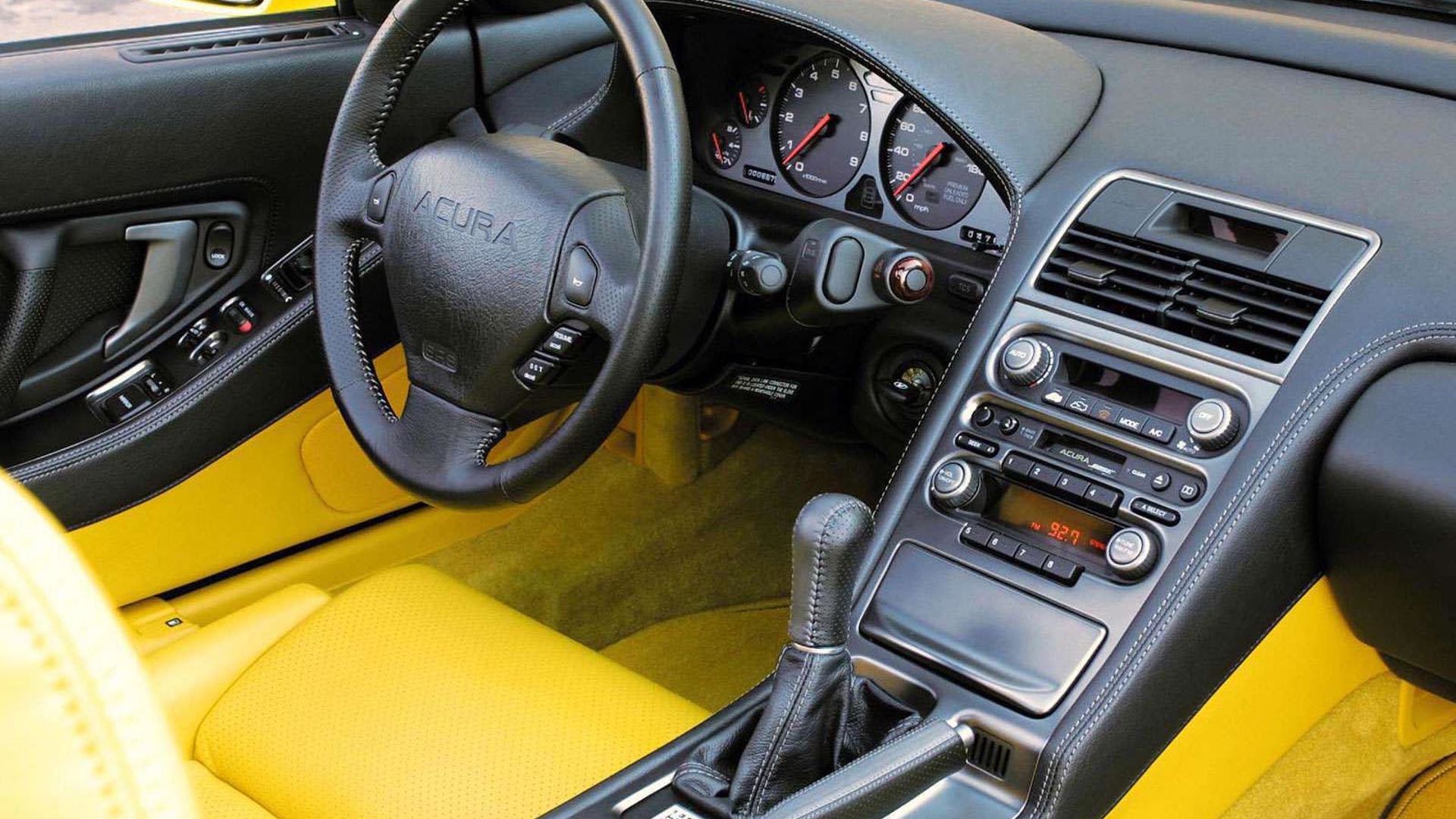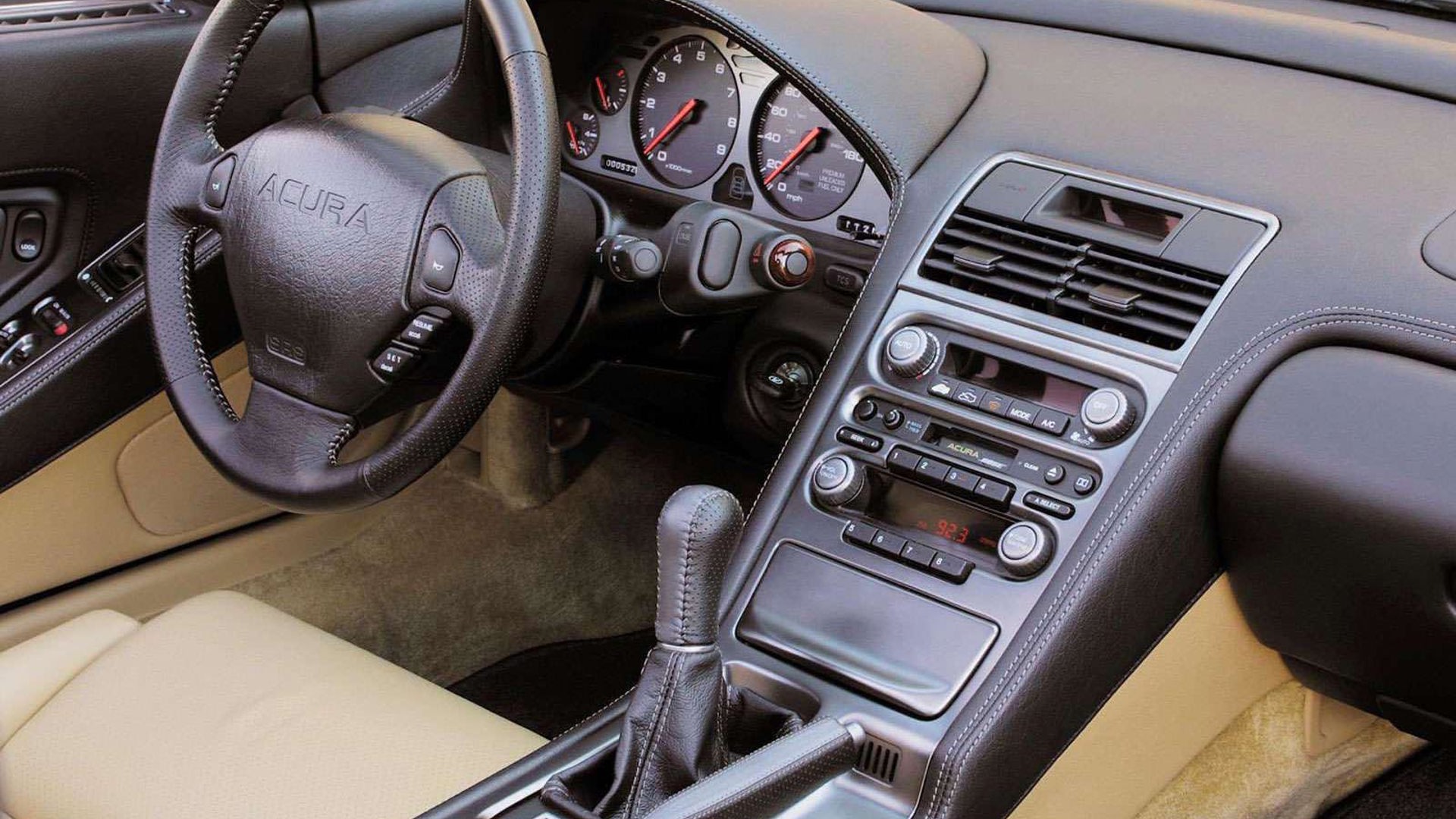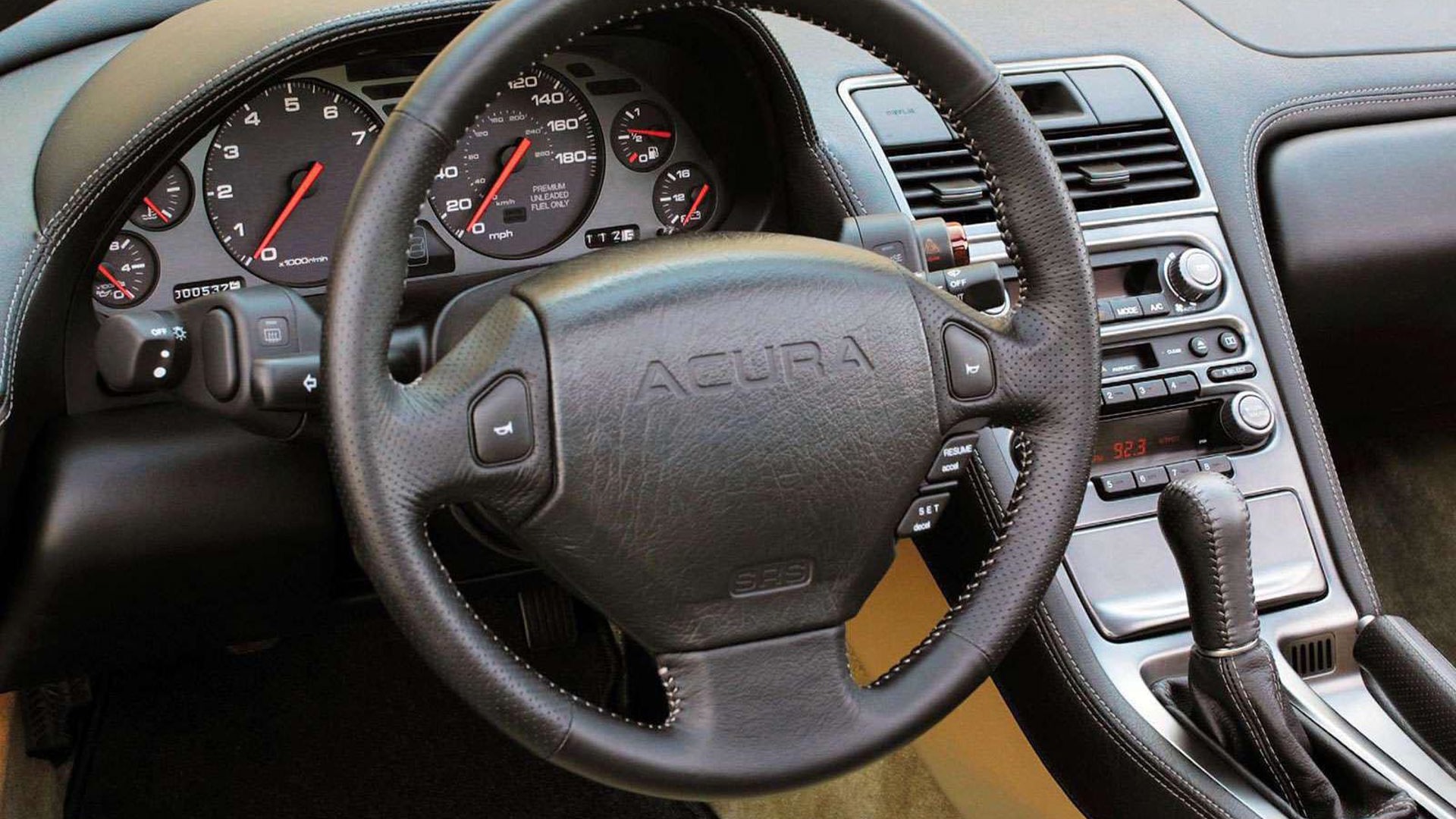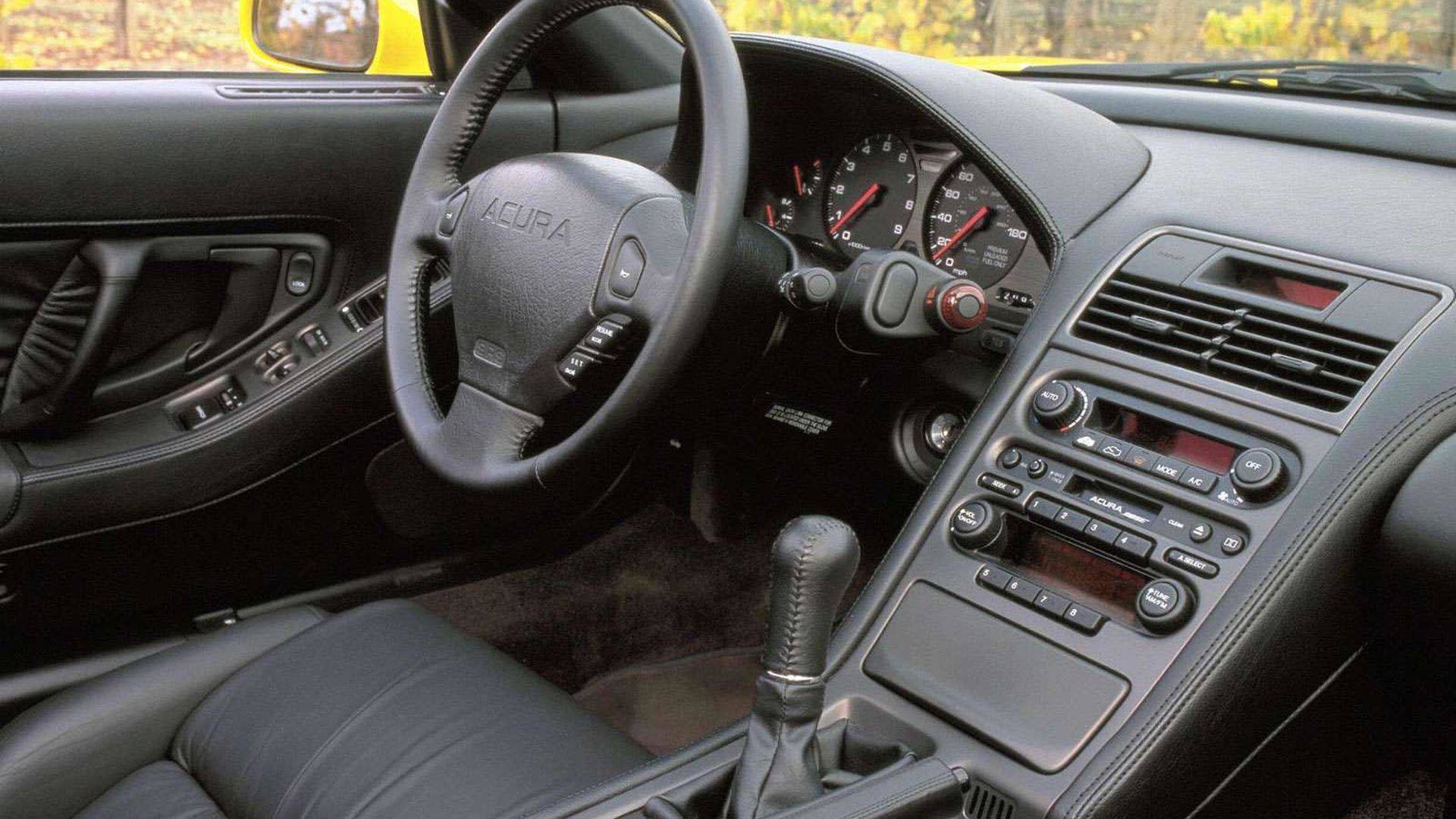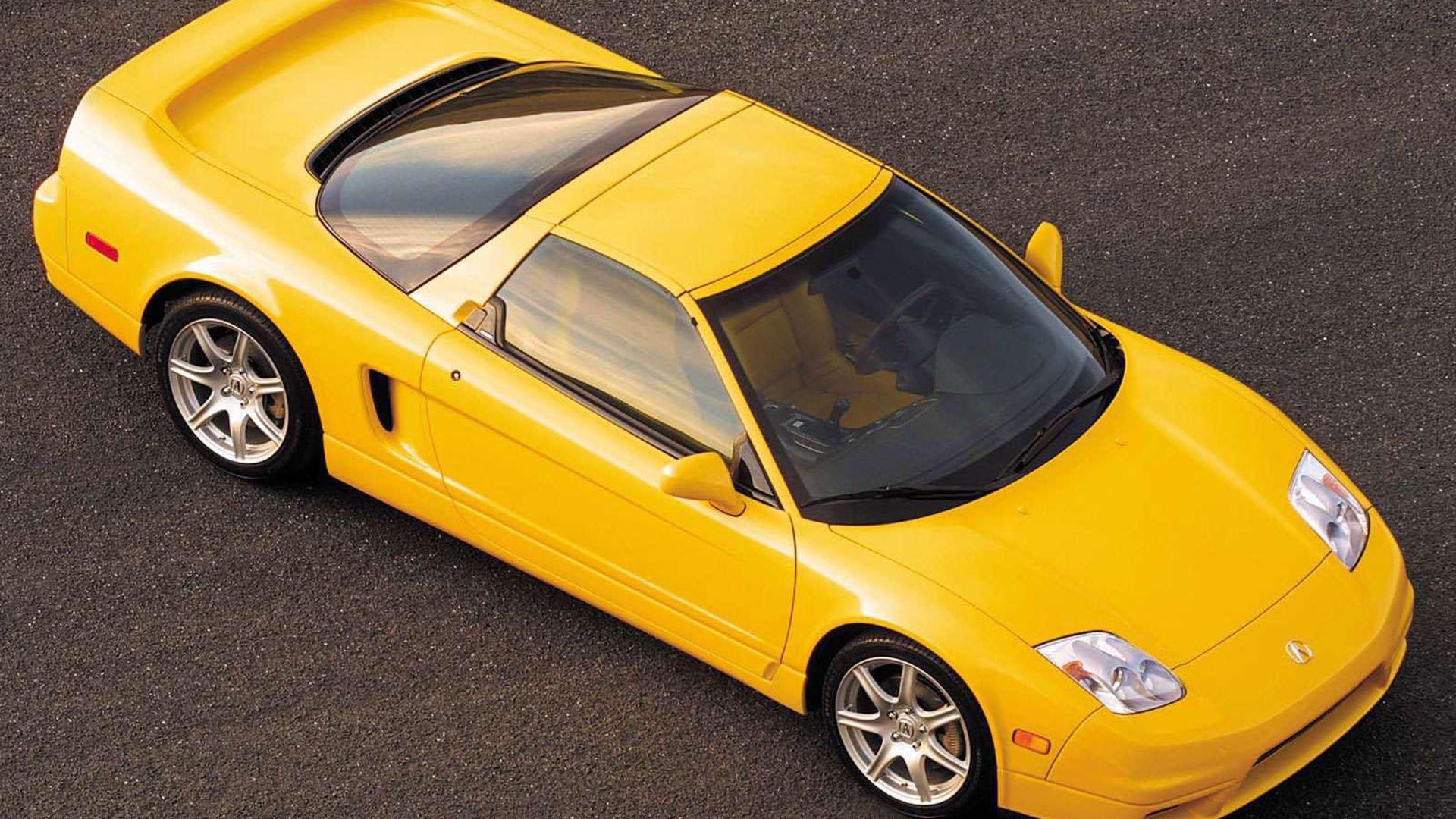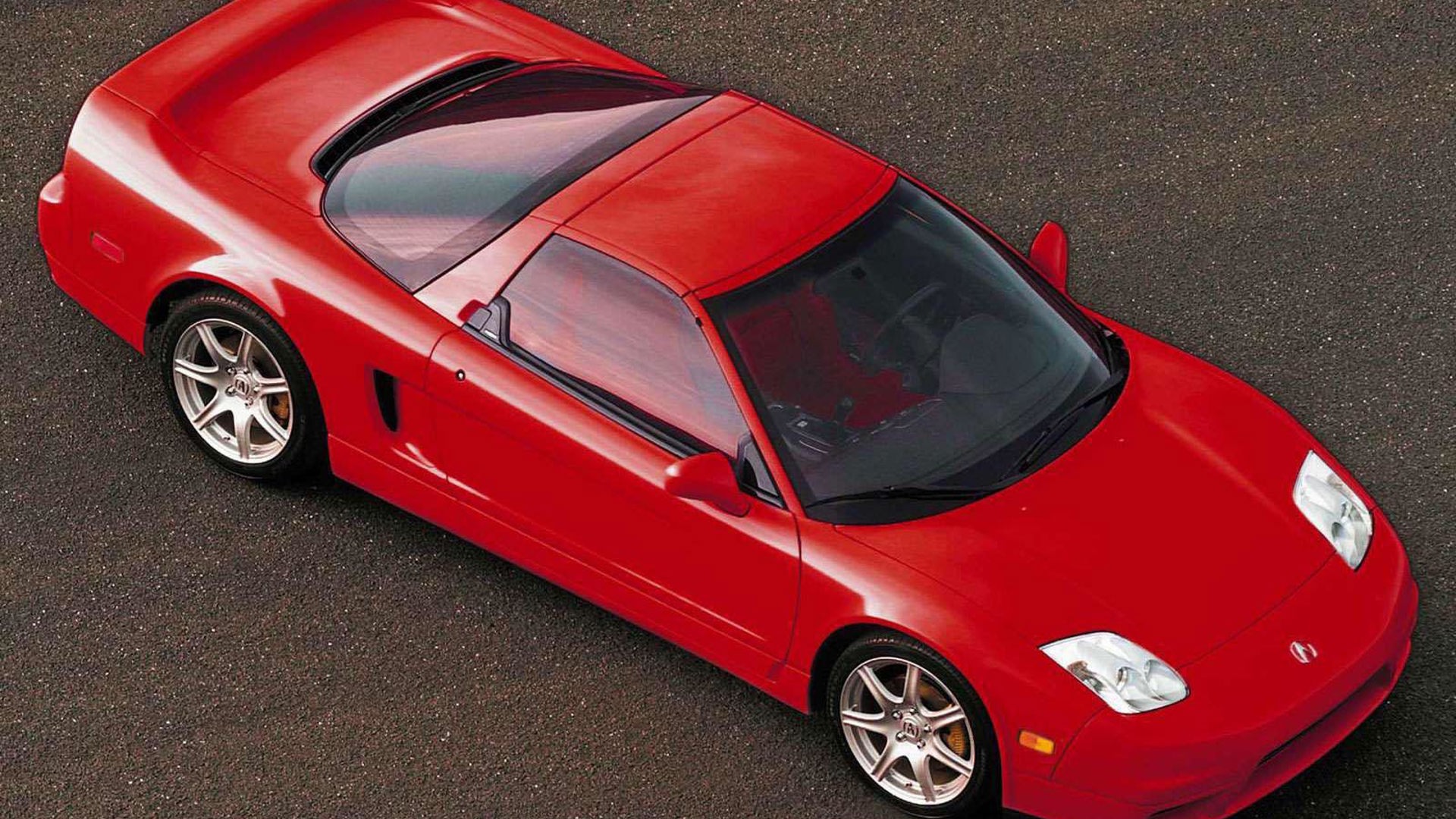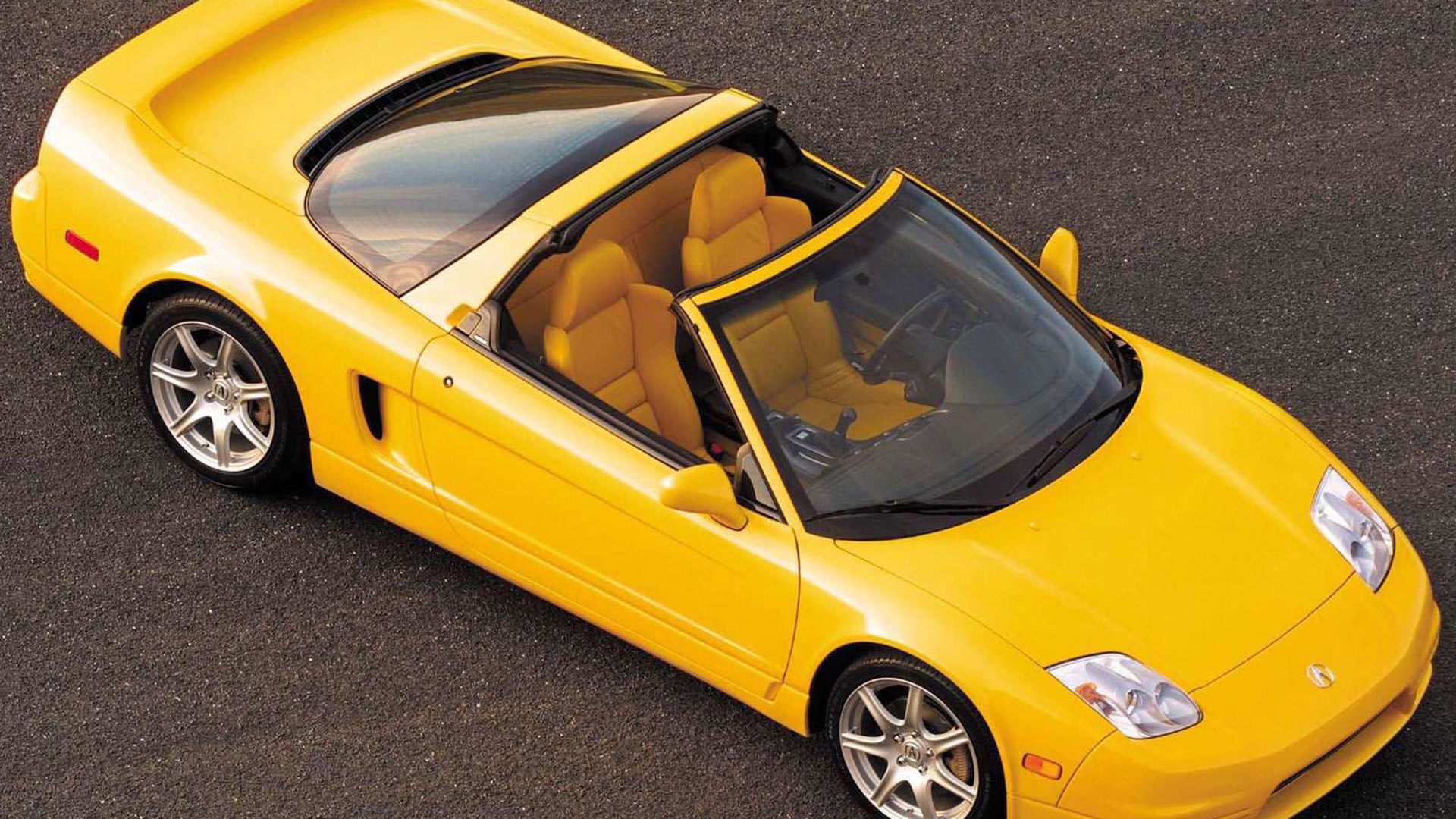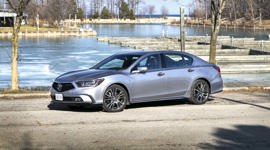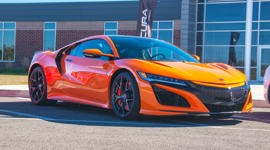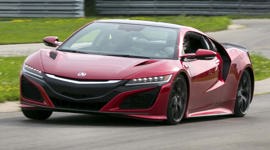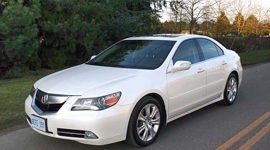Vehicle Type
Performance Coupe
History/Description
The NSX wasn’t a car anyone bought to have the fastest supercar on their block. Launched 1990 and battling the likes the Porsche 911, Ferrari 355, Dodge Viper, Lotus Esprit and Chevrolet Corvette in its lifetime, all models got a VTEC V6 engine smack in the middle, making between 250 and 300 horsepower, depending on the model and year.
So, this wasn’t a car shopped for pure speed. It was a car bought because it was cool looking as all hell.
So, this wasn’t a car shopped for pure speed. It was a car bought because it was cool looking as all hell. And had a gorgeous V6 engine. And looked like a Ferrari. And handled like a fighter jet.
Some Ferraris from this era are still priced like real estate – but you can get an NSX on the affordable side of the spectrum nowadays, to the delight of the local Honda Civic tuner crowd, who will be super-envious of your VTEC. Best of all, unlike the comparable finicky supercars from its era, the NSX isn’t incredibly fussy about tune-ups, parts and maintenance.
Engines/Trim
NSX models came one way: as a two-seater with a mid-mounted VTEC V6 driving the rear wheels. The NSX was a hard-topped coupe, while the NSX-T had a removable targa top.
Early models got a 3.0L V6 making 252 hp with the automatic transmission and 270 with the five-speed manual. From 1997, a 3.2L V6 landed under the hood, bumping power to 290 horses. It was joined by a new six-speed manual transmission. Special versions of the NSX got further upgrades to power output.
What Owners Like
Beautiful handling, steering, balance, styling and an all around authentic performance car driving experience are highly rated by NSX owners, many of who say there’s nothing closer to a perfect sports car on the road, then or now. Ride comfort, fuel mileage and everyday usability are all highly rated, too.
What Owners Dislike
Owners of cars like the NSX tend not to have any complaints, though some owners do wish for more interior space, and an easier time with boarding and exiting.
Here are some owner reviews.
Common Issues
Many NSX owners report a reliable, solid and no-nonsense ownership experience from their rides, though a few checks should be considered mandatory ahead of your purchase.
As with any used performance car, check the consumable parts. Tires, brake pads, brake rotors and the clutch on a used NSX should all be presumed to be in need of replacement until the shopper and / or his mechanic confirm otherwise. As a performance car, replacing consumable parts won’t be inexpensive – so be sure the seller isn’t trying to pass a replacement bill onto you. Coax slippage from a worn clutch by applying full throttle from a low speed in a high gear, confirm tires have plenty of remaining tread life, and ask a mechanic for help checking out the brakes if you’re not sure how.
According to owner forums, some transmissions in earlier (1991 and 1992) NSX models may have a defective transmission case design which allows a snap-ring inside of the gearbox to shatter. Symptoms of the snap-ring problem include a transmission that pops out of gear on its own, or a grinding / growling noise while driving. Listen closely on your test drive, noting that the transmission in the NSX is in the rear of the car.
Using the vehicle’s transmission number (not its VIN number), an Acura service technician or mechanic can determine if the model you’re considering is at risk of snap-ring failure, which will require replacement or rebuilding of the transmission.
Here’s a good guide with everything you need to know about possible transmission snap-ring failure.
Next, note that the NSX’s engine uses a timing belt to set its mechanical heartbeat. This component needs to be changed preemptively on a periodic basis before it fails. If it does fail, the engine in your used NSX will turn into a giant heap of shrapnel. You’ll be able to remove it, and use it as a boat anchor, or for extra winter traction in the back of a pickup truck, and little more.
So, determine where the timing belt in the NSX you’re considering sits within its lifespan. If you’re unsure, budget for a change. A mechanic can easily change the water pump while changing the timing belt, too.
Have the model inspected for signs of worn or dried-up coolant lines, possibly accompanied by coolant leaks. There are over 20 individual coolant lines, and owners say that with age and use, these wear out, crack, and leak. Many owners have replaced the coolant lines as a weekend project, though it’s an involved job.
Be on the lookout for leaks. Especially in targa-top models, you’ll want to be sure there’s no moisture or mildew in the carpeting, and that the seats show no signs of water damage. Leather that looks dried up, more like beef jerkey than soft leather, is a sign of trouble. Pull up carpeting and floor mats for a better look. Note that weather seals around the removable top, as well as around the trunk and engine cover, should be plump, flexible and intact – not dried up, crispy or crumbling apart. Pull up the trunk carpeting and look for signs of moisture there, too. Leaks can be caused by bad weather seals, or plugged body drain passageways, which clog with dust and debris over time. Here’s some more reading.
Confirm that the remote key fobs work, that the windows roll up and down as expected, and that the trunk lid stays up on its own. Run the climate control system on all settings to confirm proper operation, too. Also, be sure to check the stereo system head-unit for proper operation.
One final note – where possible, avoid a used NSX model with extensive modifications to the engine or suspension, which can negatively affect durability and performance of affected parts. Though intake and exhaust upgrades are typically safe and will be common, models with nitrous, forced-induction or non-factory internals should be avoided by the average shopper.
The Verdict
The NSX amounts to a great used supercar buy for attainability and relatively low running costs. This machine packed a lofty six-figure pricetag a decade ago, and today, is not only becoming affordable, but proving reliable and easy to own by used supercar standards, too. Shop carefully, consider a pre-purchase mechanical inspection mandatory, and you’re well on your way to enjoying one of the most beautiful driving machines ever built.
